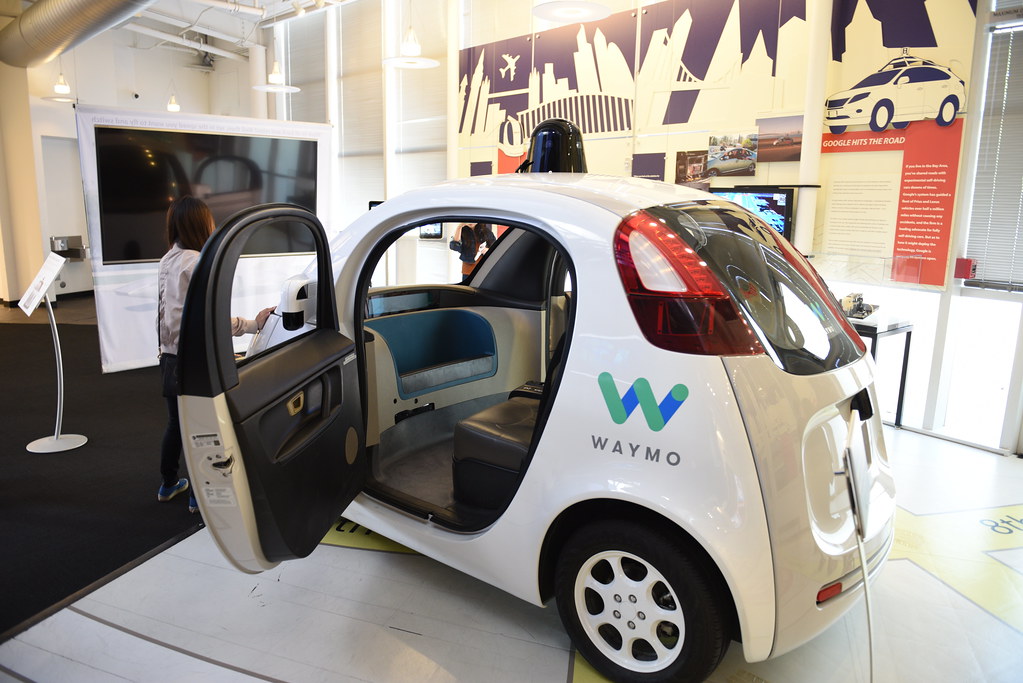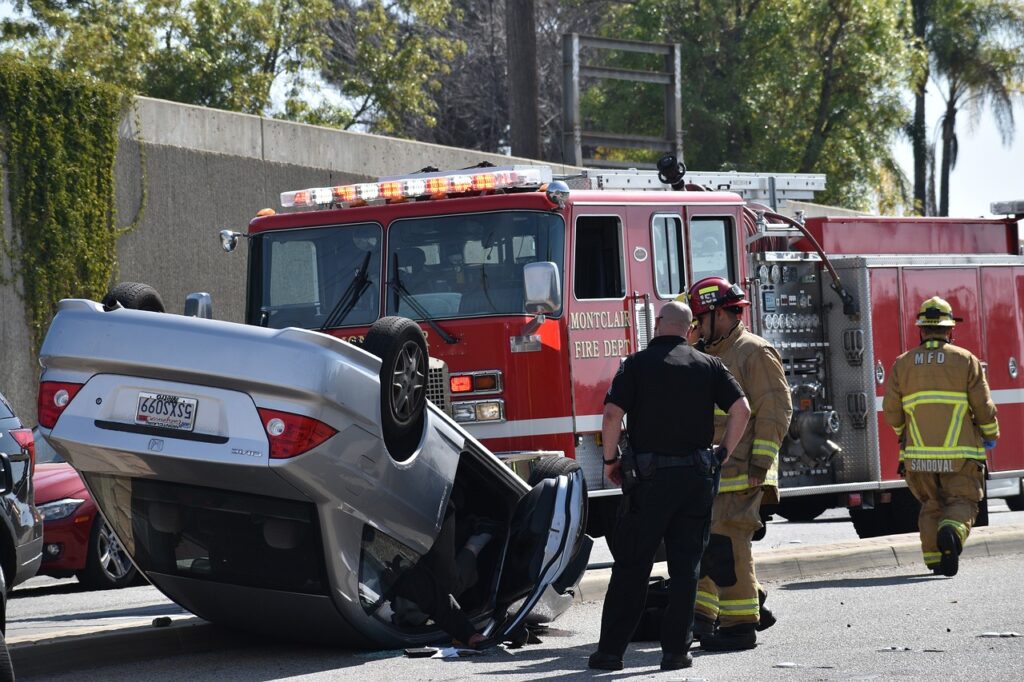
The dawn of autonomous vehicles promised a revolution in transportation, envisioning a future where cars navigate our roads with unparalleled safety and efficiency. At the forefront of this technological frontier is Waymo, a company that began its journey within Google and has since expanded its robotaxi services to major U.S. cities like Phoenix, San Francisco, and Los Angeles. Their vehicles, designed to operate without human drivers, represent a bold leap into the future, offering a glimpse of what mobility could become. As these sophisticated machines increasingly become part of our daily lives, a critical question emerges: how are they performing in the real world, especially when it comes to unforeseen challenges and, regrettably, accidents?
It is with a keen sense of curiosity and a dedication to understanding this evolving landscape that we delve deep into the data. Examining the incidents involving Waymo vehicles isn’t about casting shadows on innovation; it’s about illuminating the path forward. By meticulously analyzing crash statistics, injury reports, and contextual factors, we gain invaluable insights into the intricacies of autonomous systems, highlighting areas of success and opportunities for improvement. This investigation is crucial for policymakers, developers, and the public alike, as we collectively navigate the complex implications of introducing such advanced technology onto our shared infrastructure.
Join us as we embark on an in-depth exploration of Waymo’s accident statistics, dissecting the numbers to understand the what, where, and when of these incidents. We’ll look at the trajectory of reported crashes, their geographical patterns, the human impact in terms of injuries and fatalities, and even the environmental conditions surrounding these events. This journey through the data will offer a comprehensive overview, revealing the nuanced realities of autonomous driving today and fostering a more informed conversation about the future of transportation.

1. **Overall Waymo Accident Count (2021-2024): A Snapshot of Incidents**
The sheer volume of incidents involving autonomous vehicles is often a topic of intense public and media scrutiny, and for Waymo, the data provides a compelling starting point. Between 2021 and 2024, a significant number of Waymo accidents were reported to the National Highway Traffic Safety Administration (NHTSA), totaling 696 incidents. This figure represents all reported occurrences where a Waymo vehicle was involved, emphasizing that not every incident was necessarily caused by the autonomous system itself, but rather simply included one of their vehicles.
This aggregate number, 696, offers a foundational understanding of the frequency with which Waymo vehicles encounter collisions or other incidents on public roads. It’s a testament to the extensive real-world testing and deployment that Waymo has undertaken, collecting a vast amount of data that is invaluable for analysis. These reports are the bedrock upon which our understanding of autonomous vehicle safety is built, providing concrete instances for investigation and learning.
Understanding this total count allows us to appreciate the scale of Waymo’s operations and the challenges inherent in introducing a new mode of transportation. Each reported incident, regardless of fault, contributes to a larger dataset that helps engineers and regulators identify patterns, refine algorithms, and enhance vehicle safety features. It’s a continuous feedback loop that drives the iterative development process of autonomous technology, pushing it closer to its promised potential.

2. **Recent Waymo Crash Updates and Fatalities (2025 Data and Beyond)**
While the 2021-2024 data provides a historical overview, the narrative around autonomous vehicle safety is constantly evolving, with new incidents continuously being reported. As of August 26, 2025, a significant 464 incidents involving Waymo vehicles had already been reported to the NHTSA in the year 2025 alone. This suggests a continued, and perhaps even accelerated, rate of occurrences as the fleet size and operational areas expand.
Tragically, these incidents sometimes carry severe consequences. The 2025 data, though not included in the broader 2021-2024 analysis, reveals one fatality, one serious injury, two moderate injuries, and 28 minor injuries resulting from these 464 reported events. This underscores the critical human element in these statistics and the profound impact even a single incident can have on individuals and communities.
Beyond the raw numbers, specific fatalities have garnered significant attention, illustrating the complex scenarios autonomous vehicles navigate. In a separate incident from January 19, 2025, in San Francisco, an unoccupied, stationary Waymo car was tragically struck by a high-speed Tesla, resulting in the death of 27-year-old Mikhael Romanenko and his dog. This highlights that autonomous vehicles can be involved in fatal crashes even when they are not the instigating party.
Furthermore, the discussion of fatalities extends to non-human lives, reminding us of the intricate interactions autonomous vehicles have with their environment. In May 2023, a dog was struck and killed by a Waymo self-driving car in San Francisco when it ran out from behind a parked vehicle. While the system correctly identified the dog, it was unable to avoid the collision due to sudden movement, even with a human safety operator present. These instances, though distinct, collectively paint a picture of the unpredictable challenges on our roads.
3. **Geographic Hotbeds: Where Waymos Are Crashing (States and Top Cities)**
The location of autonomous vehicle incidents offers crucial insights into operational environments and regional challenges. As of January 2025, Waymo primarily operates in three states: California, Arizona, and Texas, and the accident data directly reflects this geographic focus. California leads with the highest number of incidents, accounting for 454 out of 696 total crashes between 2021-2024. Arizona follows with 220 incidents, and Texas records 20. A notable outlier is Georgia, with 2 incidents, where Waymo has conducted autonomous truck testing.
Drilling down further, the data identifies specific cities as key zones for Waymo activity and, consequently, incidents. San Francisco tops the list with a substantial 370 incidents, making it a critical area for understanding urban autonomous driving challenges. Phoenix, another significant operational hub, ranks second with 106 incidents. Los Angeles and Tempe share the third position, each reporting 60 incidents, showcasing the concentrated deployment in these urban centers.
Rounding out the top ten cities, we see Scottsdale with 26 incidents, Austin with 17, and Chandler with 16. Mesa and Santa Monica each reported 7 incidents, while Culver City had 4. This detailed geographical breakdown is invaluable, suggesting that factors specific to these urban environments, such as dense traffic, complex intersections, or varied road conditions, may contribute to the higher incidence rates, providing targeted areas for technological refinement and operational adjustments.
In Los Angeles alone, there were 78 Waymo accidents between 2021-2024. Within the broader LA metropolitan area, Los Angeles city itself accounted for 60 incidents, followed by Santa Monica with 7, Culver City with 4, and West Hollywood with 3. Beverly Hills and Marina Del Rey each reported 2 and 1 incident respectively, further emphasizing the urban concentration of these occurrences. As of November 2024, approximately 100 Waymo cars were operating across an 80-square-mile service area in Los Angeles, stretching from Santa Monica to Downtown LA, highlighting the significant presence and activity in this sprawling city.
4. **The Escalating Trend: Waymo Accident Timeline (2021-2024 Yearly Progression)**
Examining the Waymo accident timeline reveals a clear and, for some, concerning trend: a significant increase in the number of reported incidents year over year. In 2021, the company reported 33 incidents. This number more than doubled in 2022, reaching 78. The upward trajectory continued into 2023, with 123 incidents recorded, further highlighting the growing presence and operational hours of Waymo vehicles on public roads.
The most dramatic increase occurred in 2024, which saw a staggering 462 incidents. This sharp rise demonstrates not only the expanding deployment of Waymo’s fleet but also the inherent challenges that come with scaling autonomous vehicle operations. Each year brings new complexities, from navigating diverse traffic conditions to interacting with human drivers who are still learning to share the road with self-driving technology.
This escalating trend in incidents, while perhaps expected with increased deployment, underscores the critical need for continuous vigilance and improvement in autonomous driving systems. It serves as a stark reminder that as these vehicles become more ubiquitous, the volume of interactions with the unpredictable real world grows exponentially. The data from 2021 to 2024 provides a foundational history, showing how quickly the landscape of autonomous incidents can evolve.
Furthermore, monthly data for ADS-equipped vehicles across the U.S. (not exclusive to Waymo, but indicative of the broader trend) echoes this escalation, with crashes rising from 12 in July 2021 to 80 in December 2024, and peaking at 110 in May 2025. This consistent growth across the industry, particularly for Waymo as a leading operator, necessitates ongoing in-depth analysis to understand the underlying factors contributing to this upward trajectory.

5. **The Human Cost: Waymo Accident Injuries (Severity Breakdown)**
Beyond the sheer number of incidents, a crucial aspect of understanding autonomous vehicle safety is the human toll, specifically the severity of injuries sustained in these collisions. Between 2021 and 2024, Waymo accidents resulted in 47 reported injuries. This figure, though relatively small compared to the total number of incidents, offers a vital perspective on the impact of these crashes.
The breakdown of injury severity provides a more nuanced picture. Out of the 696 reported incidents, 632 involved no reported injuries, which is certainly a positive indicator. However, 38 incidents resulted in minor injuries, 6 in moderate injuries, and 3 in serious injuries. An additional 17 incidents had unknown injury severity, emphasizing the complexities of initial reporting.
These statistics highlight the importance of not just accident prevention, but also minimizing the severity of outcomes when incidents do occur. The presence of moderate and serious injuries, even in a small number of cases, underscores the real-world risks associated with any vehicle operation. It prompts ongoing research into how autonomous systems can be optimized to mitigate harm, even in unavoidable collision scenarios.
Every injury, regardless of its classification, represents a real person affected by these technological advancements. Understanding this human cost is paramount for all stakeholders involved in the development and deployment of autonomous vehicles, reinforcing the commitment to continuous safety enhancements and robust emergency response protocols.

6. **Case Studies of Serious Waymo Accidents (Specific 2023-2024 Incidents)**
The three serious injury accidents reported between 2021 and 2024 offer critical insights into the real-world complexities Waymo vehicles encounter. Each incident provides a unique scenario for learning and analysis, moving beyond aggregated numbers to specific contextual details. These case studies are invaluable for understanding the specific dynamics that can lead to more severe outcomes.
One such incident occurred in October 2024 in San Francisco. A Waymo autonomous vehicle (AV) was stopped in a traffic queue at a red light. A westbound passenger car crossed the double yellow line, collided with an SUV in the adjacent lane, and the SUV then struck the driver’s side of the Waymo AV. The Waymo AV was in autonomous mode at the time, and an individual involved was transported to a hospital for medical treatment. This highlights scenarios where the AV is an innocent party, but still involved in a serious multi-vehicle collision.
Another serious injury collision took place in May 2024 in Los Angeles. A Waymo AV, operating in autonomous mode with a test driver present, was traveling behind a box truck. A passenger car approached rapidly from behind, partially entered another lane, and its front right corner struck the rear left corner of the Waymo AV. The passenger car then hit the center median. An individual was transported to a hospital, an airbag deployed, and a vehicle was towed, underscoring the severity. This scenario demonstrates challenges with other drivers’ unpredictable behavior.
The third serious incident occurred in November 2023, again in San Francisco, at an intersection. A Waymo AV was stopped at a red light alongside another vehicle. After the light turned green, both proceeded into the intersection when a third passenger car ran a red light, striking the front right of the Waymo AV and the adjacent car before hitting pedestrians on the sidewalk. The Waymo AV was in autonomous mode, and all three vehicles were towed, with an individual transported for medical treatment. This case emphasizes the dangers posed by human disregard for traffic laws.
7. **The Role of the Human Element: Operator Presence in Waymo Incidents**
The discussion around autonomous vehicle safety often involves the debate about the presence, or absence, of human oversight. Waymo operates a mix of fully autonomous vehicles and those with human safety operators. The data on operator presence during incidents sheds light on how this human element interacts with the autonomous system when things go awry.
Out of the 696 reported incidents, the majority, 521, occurred with no human operator present in the vehicle. This statistic indicates the extent to which Waymo is deploying truly driverless cars in its commercial operations. The absence of a human driver in these situations means the autonomous system is solely responsible for sensing, planning, and executing driving decisions.
In contrast, 167 incidents involved an in-vehicle operator, whether commercial or test drivers. These are situations where a human is present, potentially monitoring or even taking control if necessary. A smaller number, 5 incidents, involved both an in-vehicle and remote operator, suggesting multi-layered oversight in certain testing or operational contexts. This differentiation is crucial for understanding liability and the specific circumstances surrounding each crash.
The varying levels of human intervention during these incidents offer valuable data for refining both the autonomous technology and the protocols for human oversight. It allows Waymo and regulators to assess whether the presence of an operator improves safety, how effectively operators intervene, and under what conditions a fully driverless system performs optimally. This continuous analysis of human-machine interaction is central to advancing autonomous driving safety.

8. **Why Are Self-Driving Car Accidents Increasing?**
The observed uptick in self-driving car accidents isn’t a singular phenomenon but a multifaceted issue. A primary driver, perhaps unsurprisingly, is the sheer increase in the number of autonomous vehicles being deployed on public roads. As more Waymos and other self-driving fleets expand their operational footprints across cities, the probability of them encountering complex, unpredictable real-world scenarios naturally rises, leading to a higher total number of incidents reported. This scaling of operations directly correlates with the statistical likelihood of involvement in a collision.
Beyond the simple arithmetic of increased deployment, the inherent limits of the technology itself continue to play a crucial role. While autonomous systems are sophisticated, they are not yet perfect, and the real world presents an infinite array of variables. Issues arise from sensor limitations, environmental factors obscuring critical data, or subtle software errors. The challenge of flawlessly interpreting the nuanced behavior of human drivers, cyclists, and pedestrians in complex urban environments remains a formidable hurdle for AI.
This continuous interplay between expanding operational scale and evolving technology capabilities underscores the iterative nature of autonomous vehicle development. Each incident, though regrettable, becomes a data point, a learning opportunity for engineers to refine algorithms and enhance vehicle safety features. The increase in reported accidents, therefore, can be viewed not just as a concern, but also as a necessary part of rigorous real-world testing that paves the way for a more robust and safer future.
9. **How Deaths Differ Between Self-Driving Cars and ADAS2 Vehicles**
When evaluating the safety landscape of advanced vehicle technologies, it’s critical to distinguish between fully autonomous driving systems (ADS) and Advanced Driver Assistance Systems (ADAS2). This distinction is paramount, as their operational paradigms and safety profiles differ significantly. ADAS2, while offering valuable assistance, fundamentally requires a human driver to remain attentive and prepared to take full control, functioning as a support system, not a replacement for human supervision.
The human toll in incidents involving these two categories presents a stark contrast, according to recent NHTSA data. Up to July 15, 2025, fully self-driving cars (ADS), representing the highest levels of automation, were connected to only one reported fatality. This single, tragic instance provides a powerful, albeit limited, data point on the direct fatal outcomes associated with truly driverless operations.
In sharp contrast, vehicles equipped with ADAS2 systems, which mandate active human engagement, have been involved in a substantially higher number of fatal incidents, totaling 42 deaths during the same period. This considerable difference highlights a critical safety dynamic: when human drivers remain partially responsible, the potential for human error, distraction, or delayed intervention persists. These statistics offer a compelling, if preliminary, argument for the potential safety benefits of fully autonomous systems over partial automation.
10. **Company-Specific Crash Data: A Comparative Look**
Delving into the landscape of autonomous vehicle incidents across different developers reveals a varied picture, with some companies reporting significantly more crashes than others. This granular data, spanning from July 2021 until July 15, 2025, offers insights into the operational scale and incident rates of leading players in the autonomous driving sector, crucial for understanding broader industry trends.
Waymo LLC stands out with the highest number of reported crashes, totaling 1,050 incidents. This figure surpasses its competitors, underscoring Waymo’s extensive deployment and testing across multiple major U.S. cities. The sheer volume of Waymo vehicles on the road, accumulating millions of miles in complex urban environments, logically contributes to a higher absolute number of reported incidents. Following Waymo, Cruise LLC reported 155 crashes, Transdev Alternative Services 134, and Zoox, Inc. the fewest with 94 incidents.
It is vital to approach these comparative figures with a critical perspective. Drawing definitive conclusions solely from raw crash numbers is challenging, as it fails to account for crucial variables like total vehicles in operation, cumulative miles driven, or the complexity of operational domains. A larger fleet will inherently report more incidents, regardless of its safety performance per mile. Therefore, these numbers offer a snapshot, but highlight the need for more comprehensive, normalized data to accurately assess comparative safety among AV developers.

11. **Addressing Specific Failures: Waymo Vehicle Recalls and Updates**
The journey towards fully autonomous driving is characterized by continuous learning and iterative improvement, often spurred by real-world incidents. A notable example occurred in May 2024 when a Waymo driverless vehicle had a low-speed collision with a wooden utility pole in a Phoenix alley. While no injuries occurred, this incident highlighted a specific area where the autonomous system’s perception and response capabilities required enhancement.
In a proactive move, this incident prompted Waymo to voluntarily recall 672 of its self-driving cars to address the issue. The company implemented a two-pronged solution: first, a crucial software update was rolled out to bolster the vehicles’ ability to accurately detect and appropriately respond to pole-like objects, especially in constrained maneuvering scenarios. This enhancement directly targeted the perceptual gap that led to the collision.
Secondly, Waymo also made mapping improvements to better define road boundaries, ensuring a more precise understanding of the operational environment. These combined updates were swiftly applied to all affected vehicles by early June 2024, emphasizing the rapid deployment of safety enhancements. This episode illustrates how specific incidents contribute to the refinement of autonomous technology, leading to a safer and more robust fleet overall.
12. **The Labyrinth of Liability: Who Bears the Blame?**
As autonomous vehicles become common, the question of liability in crashes transforms into a profoundly intricate legal challenge. Unlike traditional accidents, self-driving car incidents introduce a complex web of potentially liable parties, each with unique legal and technical responsibilities that are still being defined and debated. This ambiguity is one of the most significant legal hurdles facing widespread AV adoption.
Waymo, as the pioneering developer and operator, stands at the forefront of potential liability. If an accident can be traced to a system failure, a programming flaw, or an error in the vehicle’s perception – such as misidentifying an object or a software bug leading to incorrect decision-making – then liability could rest with Waymo. This encompasses the core functionality of the autonomous system, from sensors to algorithms. The vehicle manufacturer could also bear responsibility if the accident stemmed from a mechanical failure independent of the autonomous system, like faulty brakes.
The human element, even in ostensibly “driverless” scenarios, can introduce complications. A human safety driver, present during testing, who intervenes and makes a negligent decision, could be held responsible. Similarly, passengers who intentionally interfere with the vehicle’s operation might find their actions scrutinized. External factors can also shift blame: if another driver or pedestrian acts negligently, they would likely be primarily liable, though Waymo’s system would still be evaluated for its reaction.
Ultimately, determining fault in AV crashes requires analysis of complex data logs, sensor inputs, and software decision-making processes. Investigators examine whether the AI system performed as expected, if updates were pending, and how the vehicle’s response compared to a reasonable human driver. As laws and regulations surrounding autonomous vehicles evolve, liability remains a legal gray area, requiring clearer frameworks as self-driving technology becomes more widespread.
13. **Self-Driving vs. Human Drivers: The Ongoing Safety Debate**
The question of whether self-driving cars are inherently safer than human-driven vehicles lies at the heart of public acceptance and regulatory policy. It’s a debate fraught with complexity, yielding seemingly contradictory data points. With over a million traffic fatalities globally each year, the promise of a safer alternative is compelling, yet proving that safety is not straightforward.
Initial comparative analyses presented a challenging perspective for autonomous vehicles. Early data up to 2021 indicated self-driving cars experienced 9.1 crashes per million miles driven, more than double the 4.1 crashes per million miles for human-driven vehicles. This suggested AVs were involved in incidents at a higher frequency, raising significant questions about their immediate safety advantage.
However, as technology has advanced, newer studies paint a different picture. Waymo’s research compared its autonomous driver performance against human benchmarks, revealing a “significant improvement in safety.” This study reported a 57% reduction in police-reported crashes for Waymo vehicles, translating to an accident rate of 2.1 incidents per million miles – strikingly lower than the 4.85 incidents per million miles for human drivers. This suggests Waymo’s system is 2.3 times safer in terms of police-reported incidents.
Yet, the nature of injuries also matters. While human-driven vehicle accidents often result in minor injuries, incidents caused by self-driving vehicles, though potentially fewer, are more frequently associated with moderate to severe injuries. This could be due to the types of scenarios AVs struggle with, or collision circumstances. Ultimately, with driverless technology still evolving, a definitive and comprehensive comparison remains elusive, underscoring the need for more extensive data before a conclusive judgment on comparative safety can be made.
14. **Navigating the Future: Implications for Autonomous Driving**
The unfolding narrative of self-driving car accidents carries profound implications for the future trajectory of autonomous driving technology. As these vehicles integrate more deeply into our lives, the response to incidents will shape public perception, regulatory frameworks, and the very pace of innovation. It’s a critical juncture where data, policy, and public trust converge to define the future of mobility.
One significant consequence of the increasing accident trend is the almost inevitable push for stricter regulatory oversight. Lawmakers will likely implement more stringent testing requirements, operational limitations, and reporting standards. This could lead to a more cautious and phased approach to widespread adoption, ensuring safety protocols are robust. While potentially slowing rollout, such measures are vital for building foundational trust. Public trust is perhaps the most fragile and vital component. A continuous stream of accident reports could erode confidence, making consumers hesitant. This highlights the crucial role of transparent communication and comprehensive public education about benefits, limitations, and safety efforts.
Ultimately, the future of autonomous driving demands unrelenting commitment to improvement and proactive collaboration. Developers must relentlessly refine software and hardware, learning from every incident. Regulators must create adaptive frameworks that foster innovation while prioritizing safety. And the public must engage in an open dialogue about challenges and potential. By acknowledging “how many self-driving cars have crashed” and understanding root causes, we can collectively steer this transformative technology towards a safer, more efficient future.
Read more about: The Shifting Tides of Automotive Commerce: Unpacking Why More Shoppers Are Opting for Secondhand Vehicles in 2025
As we look ahead, the journey of autonomous driving promises to reshape our world, offering unprecedented opportunities for efficiency, accessibility, and potentially, a dramatic reduction in road fatalities. Yet, this path is not without its intricate challenges, demanding continuous innovation, stringent regulation, and an unwavering commitment to public safety. The data we’ve explored underscores that autonomous vehicles are not immune to the complexities of our roads, but each incident also represents a vital lesson learned, propelling the technology closer to its ultimate vision. It’s a collective endeavor, where every byte of data, every reported incident, and every conversation about safety contributes to building a more intelligent and secure future for all.











